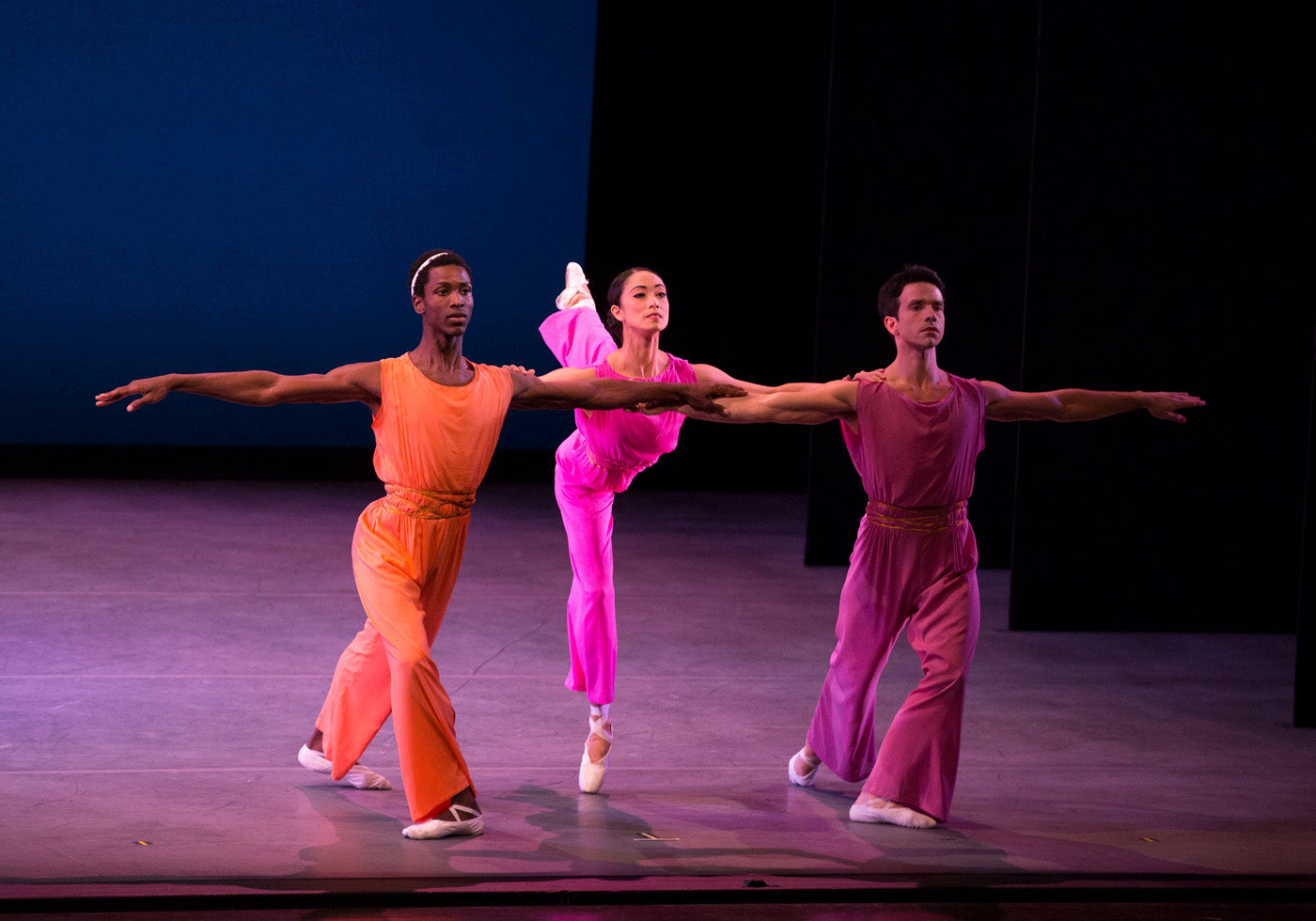Mark Morris’s “After You” is a brand new piece entering the ABT’s repertory this season, and it’s a real charmer—a lighthearted dance saturated with vibrant colors and elegant, loose-limbed movement. It is choreographed to the first three movements of “Military” piano septet by Austrian composer Johann Nepomuk Hummel (1778-1837). The musical choice for a new ballet might seem peculiar, yet Morris, known for his unwavering musical sensibilities and principles, has always had a high regard for this relatively unknown composer, having created two dances to Hummel’s music in the past. “If it weren’t for Beethoven, everybody would still know Hummel,” said Morris in one of his recent interviews, half-jokingly defending the nowadays obscurity of Hummel, who was “such a fine composer and super-popular at the time.”
“After You” is nothing short of sublime. The ballet looks and feels like a cordial gathering of friends on a green lawn on a warm sunny afternoon. From the start, the choreography and the music establish an unbound, free-flowing air at once joyful and peaceful, calm and relaxing. The cast of 12 dancers (six women and six men) are outfitted by fashion designer Isaac Mizrahi in gorgeous costumes, each with its own hue, ranging from soft pink to light raspberry to creamy peach—a riot of colors and an effortless chic all at once.
The emotional power of Morris’s choreography arises from the naturalness and unadorned simplicity of his movement vocabulary. Every step in “After You” looks graceful, soft and delicate; and each step harmoniously flows from the music. Morris puts his dancers at ease: in this piece there are no rough-edged lines, super-extended limbs and strained backs; nor are there ferocious turns and sky-reaching leaps. There is also no standard ballet hierarchy here—principals, soloists and the corps all mix together and claim the stage on equal terms. Even in the program notes the cast is listed alphabetically.
As the music—light and effervescent, full of cascading piano arpeggios and whimsical trumpet flourishes (“after you, Mozart,” indeed)—unfurls its incandescent magic, the dancers dash to and from the stage in a hypnotic flow of movement, curving the air with their beautifully articulated arms and arched feet. They come in groups (mostly trios); but every so often, a solo number pops up to give the spotlight, even if only for a moment, to one particular individual. The luminous Gillian Murphy was particularly memorable in her turn, dancing with exquisite lightness and charming wit; as was the lissome Jeffrey Cirio, formerly from Boston Ballet, who brought an appealing liveliness to his part.
At all times Morris keeps his dancers exuberantly playful, happily earthbound and enchantingly graceful, empowering them with fantastic new energy which penetrates every subtle gesture, every little bounce of this wonderful ballet.
Michel Fokine’s “Le Spectre de la rose” elaborated further on the theme of poetic expression established in the opening piece. First danced in 1911 by Vaslav Nijinsky and Tamara Karsavina, “Le Spectre” belongs to classical ballet’s glorious past. Regrettably, in the ABT’s current staging, with its discolored décor and dull costumes, this Fokine masterpiece loses its legendary visual appeal. It didn’t help that Sarah Lane gave a somewhat unassuming and dramatically inert portrayal of the main heroine. Herman Cornejo, however, as the mysterious romantic figure who whirlwinds into the young girl’s dreams, brought enough fluency and virtuosity to the title role to make this ballet entirely passable, even enjoyable.
Valse-Fantaisie, composed by Mikhail Glinka, one of the greatest Russian composers of the nineteenth century, was regarded as “the real inspiration behind the magical waltzes of Tchaikovsky.” Originally written as a piano piece, it was orchestrated by the composer in 1859. Described as “a musical poem of love,” this little charming waltz triumphed in the musical salons of St. Petersburg.
From 1931 to 1969, George Balanchine made at least four different dance interpretations of “Valse Fantaisie.” Perhaps it was the gradually unfolding mystery of Glinka’s music that kept the great ballet master so deeply fascinated with this piece.
Danced by a leading couple and a quartet of ballerinas, “Valse Fantaisie” is a magnificent evocation of nineteenth century Romanticism. The entire ballet lasts no more than 10 minutes; but Balanchine’s choreography is so visually rich that this evanescent dance boasts plenty of striking images; and the sweeping, intoxicating music stays in one’s memory long after the show is over.
To truly soar, “Valse Fantasie” needs musical dancers with brilliant footwork. The company’s principals Hee Seo and James Whiteside looked glamorous together. He is very tall and slim, with a long classical line; she is exquisite all around—delicate, light, and sprightly. Their performance was admirably elegant, even piquant; but the sense of overreaching sweep and spontaneity, which the music supplied in abundance, was unfortunately missing; and it felt like Seo run out of steam at the end of this supremely technically-demanding work.
The program ended on a somber note with a powerful rendition of Kurt Jooss’s 1932 antiwar masterpiece “The Green Table.” The superb Roman Zhurbin in the role of Death gave a performance of phenomenal physical and dramatic intensity as he rhythmically and incessantly stomped the ground, claiming his helpless victims, one by one, in his unstoppable, vicious, murderous quest. I wasn’t the only person in the audience quite literally gasping for air at the end of the show. A truthful indictment of war’s horrors, “The Green Table” still shows no signs of fading.




comments